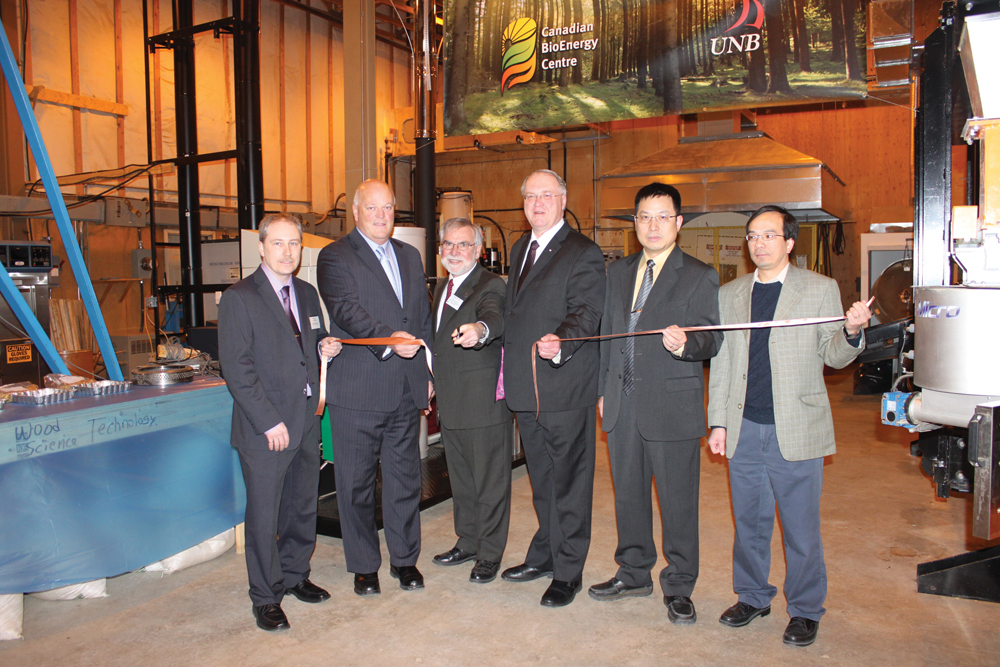Testing Grounds




PHOTO: UNIVERSITY OF NEW BRUNSWICK
March 21, 2011
BY Anna Austin
Whether you’re a biomass fuel producer, potential user or a regional farmer, the University of New Brunswick’s Canadian BioEnergy Centre is equipped to assist you.
Though operating since last year, the CBEC officially opened at the end of February. Director Michael Albright says the growing bioenergy sector has kept the center busy, and that new equipment in the lab allows the CBEC the ability to take on a considerable range of projects. “On the material characterization side, these capabilities include evaluating feedstocks coming into a potential pellet mill or bioenergy mill—the fiber qualities, the energy and ash content and any contaminants in the fuel that might affect the performance in a burning appliance—as well as things that might clinker or build up slag in the stove,” he says. “We also have a new device that can measure the ash fusion temperature.”
Advertisement
Advertisement
A new lab-scale pelletizer, hammer mill and chipper will allow the CBEC to go on to the next step of biomass material evaluation, according to Albright. That is determining the fiber’s ability to be made into energy products, whether it is for chips to be burned directly at a biomass plant or to be further ground up for pellets. “We can determine how well the material will pelletize and stay together in pellet form, and then test the pellet afterward for its durability,” Albright says. “We can tell a producer that we’re not getting a very durable pellet, so they can go back and change the pellet die or the process so that they’re forming a better pellet.”
On the appliance testing side, the CBEC has some base appliances for testing fuels, and can actually measure particulate and gas emissions from a fuel. “This can address any health concerns, of the appliance putting out too many emissions,” Albright says. “By being able to measure them, we can recommend modifications to the manufacturer to bring it into compliance with industry standards.”
Advertisement
Advertisement
CBEC’s work isn’t limited to wood or to pellets. The center is also working on ag pellets and briquettes, according to Albright. He says the next big initiative will be to facilitate a community district heating project, which would start with finding a facility such as a school that needs a boiler upgrade or heating system replacement, and a small community nearby that could be part of a closed-loop heating system. “We might have a woodworking shop or saw mill or group of farmers who have underutilized lands or residuals left, and we’ll figure out how we can combine those together to make a renewable community,” Albright says. “It could be pellet producers, farmers or wood manufacturing individuals, and we have a number of small, rural communities that would fit well with this scenario. We’ll measure and quantify all of the social and economic impacts and benefits that come from it, and put that out there as a report and model for other communities.”
The CBEC hopes to have the project agreed upon and ready to move forward within the next year, he adds.
—Anna Austin
Upcoming Events





